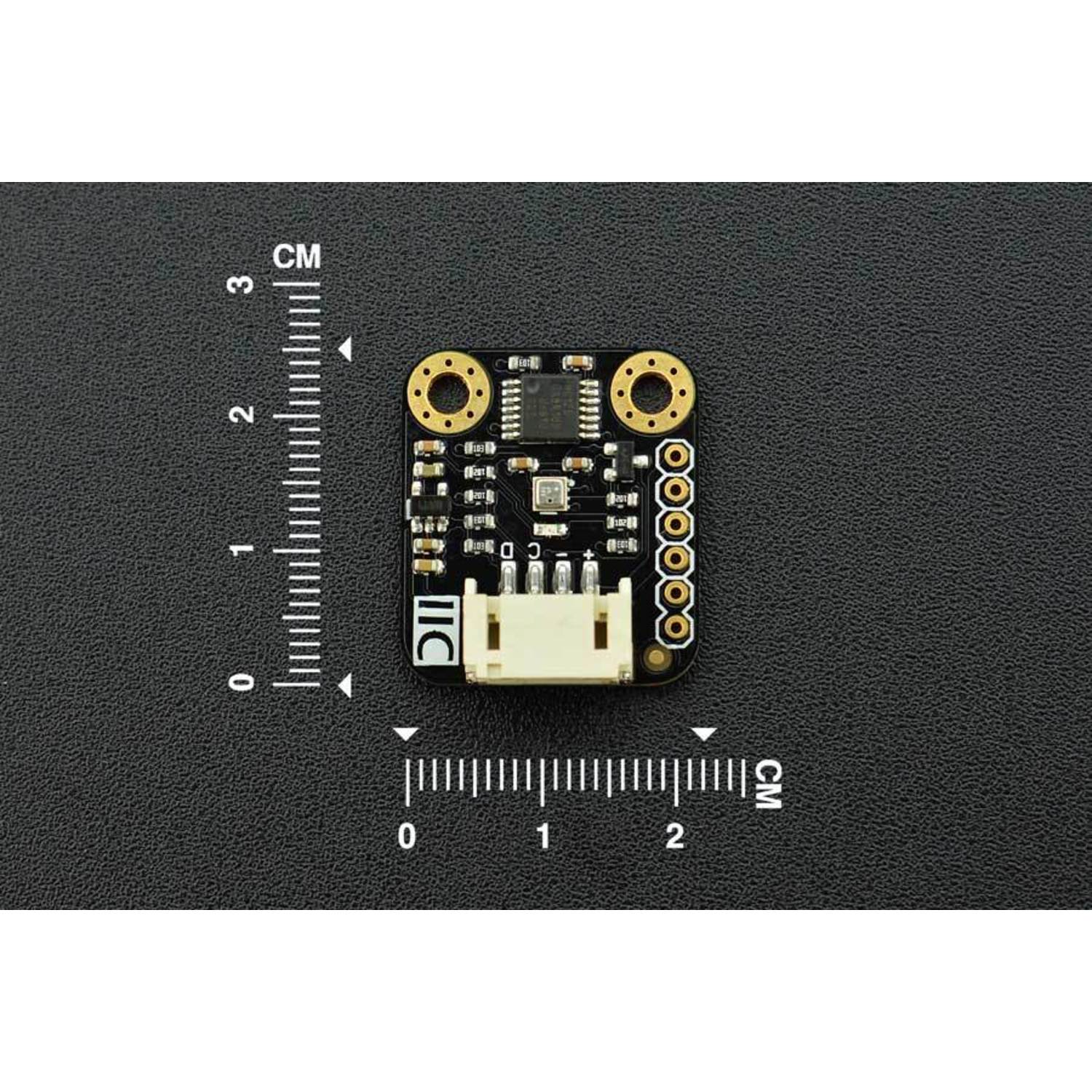The BME280 is an outstanding environmental sensor that combines an onboard temperature sensor, humidity sensor, and barometer. It boasts high precision, multiple functions, and a compact size. With both SPI and I2C interfaces, it's a breeze to create quick prototypes. This sensor is based on Bosch's latest MEMS sensor technology, offering excellent stability, especially in air pressure measurement. Its offset temperature coefficient is ±1.5 Pa/K, equivalent to ±12.6 cm at a 1 °C temperature change. It can be widely used in environmental monitoring, storey height measurement, and IoT control. Features include compatibility with 3.3V/5V microcontrollers, support for environmental monitoring of temperature, humidity, and barometric pressure, a Gravity I2C interface with a reserved XH2.54 SPI interface, and a small size for easy installation. Applications range from context awareness like skin and room change detection, home automation control for HVAC systems, IoT, GPS enhancement, indoor and outdoor navigation, weather forecasting, to vertical velocity indication. Specifications are as follows: Working Voltage is 3.3V - 5.0V, Working Current is 2mA, Working Temperature ranges from -40°C to +85°C, Temperature Measuring Range is -40°C to +85°C with a resolution of 0.1°C and a deviation of ±0.5°C, Humidity Measuring Range is 0 - 100%RH with a resolution of 0.1%RH and a deviation of ±2%RH, Pressure Measuring Range is 300 - 1100hPa, Humidity Sampling Time is 1s, Dimension is 22 * 25 mm (0.87 * 0.98 inches), and Weight is 12g. Documents include Product Wiki and More Documents. The shipping list contains one Gravity I2C BME280 Environmental Sensor (Temperature, Humidity, Barometer), one XH2.54 - 6pin Header, and one Gravity - 4P I2C/ UART Sensor Wire.




Using the Gravity I2C BME280 Environmental Sensor is easy. First, connect it to your 3.3V or 5V microcontroller using the provided wires and headers. You can choose either the I2C or SPI interface according to your needs. Once connected, it will start measuring temperature, humidity, and barometric pressure right away. When using it, make sure the working environment temperature is between -40°C and +85°C. Avoid exposing it to extreme humidity or high - pressure environments that are out of its measuring range. For maintenance, keep the sensor clean and dry. If it gets dirty, you can gently wipe it with a soft cloth. Regularly check the connections to ensure they are secure. This sensor is a great tool for various applications like home automation and environmental monitoring, so use it with confidence.